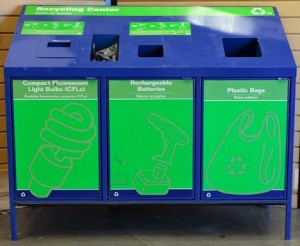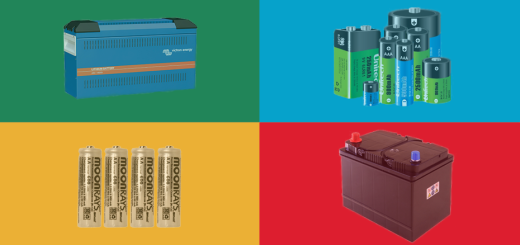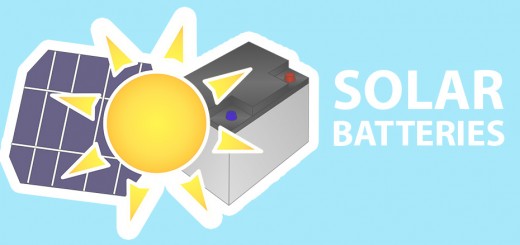How to Correctly Dispose Fluorescent Light Bulbs and Tubes?
Many people these days consider themselves to be environment-conscious and try to involve “green” methods within their daily lives and habits. This, in many cases, impacts how we are using our technology (moreover, WHAT that technology is) but not many of people think as far as what to do with those energy-saving things when they are old and do not function anymore.
Using fluorescent light bulbs in order to save the energy and thus minimize the negative impact to our environment is one thing but a proper disposal of used fluorescent light bulbs and tubes is undoubtedly another aspect that has to be strongly considered since these bulbs contain such chemical mixtures that should never be disposed without recycling them in a proper way. Correctly handled after their usage, the fluorescent bulbs and tubes cannot cause any serious dangers and hence it is every product user’s responsibility to do everything possible to dispose the lamps in a correct and safe manner.
Why it is important to recycle fluorescent bulbs and tubes?
The answer to this question lies in a simple fact that you should know before purchasing compact fluorescent light bulbs: all of fluorescent lamps contain small amount of mercury and it is a very crucial element in the functionality of these bulbs. One fact to pay particular attention to is that mercury is known to be hazardous to human health.
However, you should not be worried about fluorescent bulbs having an impact on your health if you follow all the safety tips and requirements that also include proper and correct disposal of the bulbs. Of course, one might argue that then one should simply stick to mercury-free discharge lamps. However, mercury-free bulbs produce half of the visible light what fluorescent lamps with mercury can make and so far, a greater solution than to minimize the amount of mercury in compact fluorescent lamps at the same time remaining their functions and effectiveness has not been found yet.
Apart from this aspect, you should also keep in mind that if you are using compact fluorescent bulbs outdoors, you should do everything possible to protect them from external damage. The same should be complied upon storing and carrying the fluorescent bulbs. Modern fluorescent tubes however contain a lot less mercury than early CFL products, so there is no need to panic if you see one of the tubes broken. If the room where your fluorescent tube broke will be thoroughly cleaned and aired after the breakage, there should be no risk or impact to your health afterwards.
You can already imagine what a huge and unnecessary damage it would cause to our nature and what a potential health risk people would face if thousands of such hazardous, used bulbs would actually be thrown out together with a common trash and would end up in our landfills every day.
For instance, in the United States the number of fluorescent lamps being discarded each year exceeds 600 million. That should be enough to get the full picture of why recycling these bulbs is not a mere suggestion but more like a must-do thing. Since more and more people are choosing fluorescent bulbs over incandescent lamps, the negative impact to the environment is very much likely to be seen in bigger cities unless the people will be informed and educated about correct handling and recycling of this product. Throwing your fluorescent tube in your curbside bin is a huge NO, since there is a great chance that it will break either in dumpster or in a landfill extricating all that mercury within it.
Following the high demand for compact fluorescent lights and having enough knowledge on potential threats caused by incorrect disposal of fluorescent bulbs and tubes, most of the governments and municipalities have implemented proper recycling systems, be it special disposal units or hardware stores taking in the used fluorescent lamps. Some states have actually become very strict on these matters and have prohibited the disposal of fluorescent bulbs or other bulbs containing hazardous chemicals in common waste by the law. Recycling fluorescent tubes can not only help to prevent mercury from being released in the environment, but also to recycle other elements that these bulbs contain. In fact, nearly every part of a fluorescent lamp can be further recycled including glass and metal. Nevertheless, the primary advantage of recycling is diversion of mercury from landfill sites; the scrap value of the materials collected from used fluorescent lamps is rarely enough to cover the costs of recycling.
Where and how should fluorescent lamps be disposed?
First of all, the possibilities related with fluorescent lamp disposal depend on your location and local rules and regulations applied to these matters. Check all the available online information on it to see whether you can bring your used bulbs to retailers or they should rather be disposed by your local waste collecting agencies. Keep in mind that sometimes waste collection agencies dealing with hazardous waste are collecting this sort of waste only a few times per year so it might be that you have to store your old bulbs for a while before being able to dispose them.
If you are not sure whether your municipality or local waste disposal agencies will take care of the used fluorescent bulbs, you can surely turn to your supplier. In many countries there is a concept of Supplier Responsibility which also involves lamp recycling. This means that many suppliers now actually have to have a special place in their warehouses designated for the purposes of storing waste lighting equipment. Suppliers respecting Supplier Responsibility will then take care of proper storage and transporting of your used bulbs. Used fluorescent lamps in most of the cases are packaged before being transported to a recycling facility in one of three possible methods:
- boxed for pick-up with other bulbs;
- disposed by using a prepaid lamp recycling box;
- crushed on-site before pickup. Sometimes a fluorescent lamp crusher can even be attached to a disposal drum thus isolating the dust and mercury vapor.
To put it in brief, the energy and costs saved by using fluorescent lamps are as important as proper disposal of them. No matter which company or supplier is ready to take care of your used fluorescent lamps, it is your responsibility not to choose the easiest way and make sure the old lamps do not end up with other trash but instead are being recycled in a correct and safe manner protecting the environment and people from the potential hazard the chemicals within the bulbs might cause.





